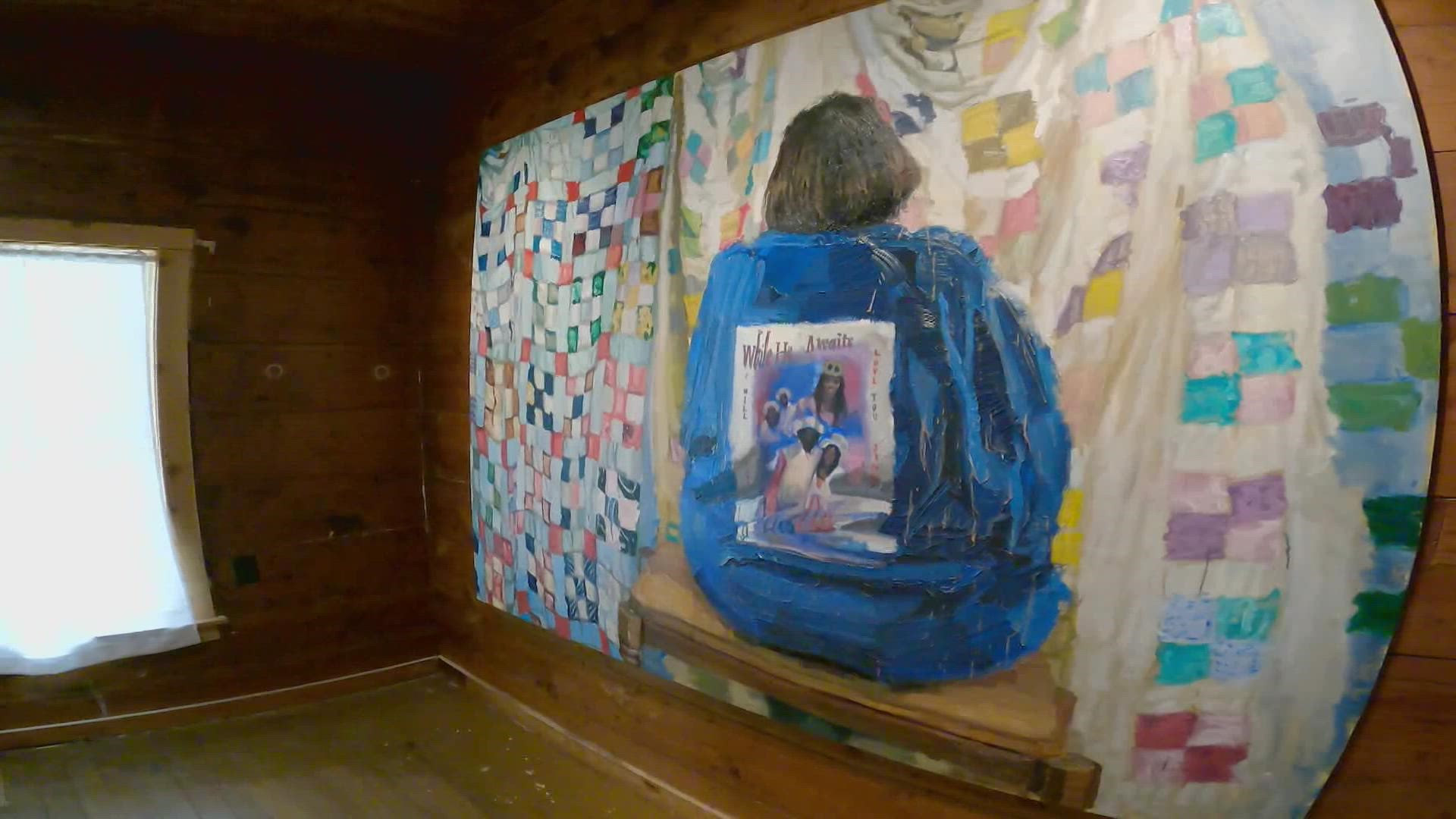FORT WORTH, Texas — Like any of his works of art, Kinfolk House started in Sedrick Huckaby’s head.
“It was hard for people to see, initially,” he said. “The house is sort of about making people close and using art as a tool to do that.”
Built in 1900, the home at 1913 Wallace Street in Fort Worth belonged to his grandmother Hallie Carpenter. Her maiden name was Welcome, and that's the inspiration for the first exhibit in the home.
“That was her spirit,” he said. “Her spirit was always one that was a welcoming spirit, really a transforming spirit.”
She passed in 2008 and for more than a decade, Huckaby, an artist raised in Fort Worth but with degrees from Boston University and Yale, has transformed it into a collaborative art space for the community.
“Art isn’t something where we have to travel all across town, but it can be in our own home and our own neighborhood,” he said.
That’s why the home, in underserved Polytechnic Heights, a primarily Black neighborhood, is the perfect location for local creatives to share work.
“Art is for every place,” Huckaby said. “Art doesn’t have to be segregated to just the arts district.”
Huckaby studied in Europe and wanted the home to have the same feeling as cathedrals that hold masterworks. His art has been featured in museums from India and Africa to Chicago and San Francisco.
Inside Kinfolk House, Huckaby has produced a papier-mâché of his grandmother, known to all as ‘Big Momma’, and her Sunday hats hang up on a wall.
“It’s a way of showing not only the beauty of her style, but the beauty of her faith,” he said.
His wife, Letitia Huckaby, is a photographer and her work hangs around pews in a large open room, where he recently hosted a calligraphy class and plans to have more events. His paintings of family members wearing memorial T-shirts complete the concept of life and death.
“Being alive and cherishing that life, but at the same time, remembering those who have passed,” he said.
Stripping the walls, getting the sheetrock roof out and cleaning up the leftover belongings, was a process paid for by his selling his artwork and with help from UT Arlington, where he works as an assistant professor.
“It has gone through transformation after transformation,” he said. “This place has a sense of home. It’s part of it. I want that to remain.”
The home is a work in progress that just opened this month, but he has blueprints to add new landscaping outside and plans for more work inside.
It may still be hard to see, but the vision is for art to flourish in an area many may view as only home for weeds.
“Every community art can blossom up and wonderful things can happen,” he said.

